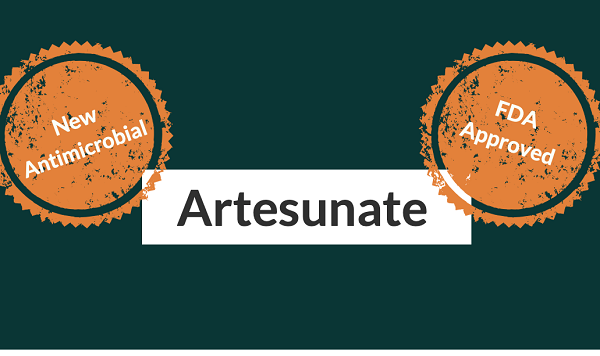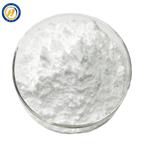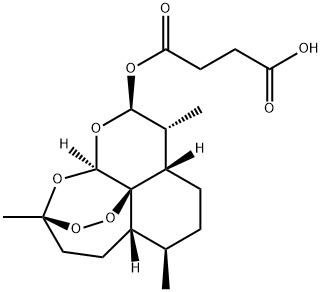Artesunate: a semi-synthetic derivative of artemisinin
Aug 12,2024
Introduction
Artesunate, a semi-synthetic derivative of artemisinin, and other artemisinin derivatives are novel drugs for treating malaria. Artesunate is generally well-tolerated, safe, and has few adverse effects. In addition to the well-known anti-malarial activity of artesunate, a cytotoxic action against cancer cell lines of different tumour types was recently identified. Because artesunate has increased greatly, further research on its safety is necessary.

Artesunate is a white or light yellowish crystalline powder. Artesunate is water soluble, while artemether is lipid soluble; both are available for oral, intramuscular and rectal administration. Artesunate is also available as an i.v. formulation. They are rapidly effective in severe and multidrug-resistant malaria and are well tolerated but should be used with caution in patients with chronic cardiac disorders as they prolong the PR and QTc interval in some experimental animals. Intravenous artesunate is restricted in the West because of concerns with manufacturing standards; rectal and intramuscular artemisinin preparations are widely used in the developing world as a pre-referral treatment for patients with severe falciparum malaria who are unable to reach the nearest health facility without risking clinical deterioration. Artemisinins are not appropriate for prophylaxis (because of their short half-life) and should never be used as monotherapy for uncomplicated falciparum malaria[1].
Anti-malarial activity
Artesunate is a water-soluble hemisuccinate derivative available in parenteral and oral formulations. The parenteral drug is dispensed as powdered artesunic acid. Neutral aqueous solutions are unstable. Artesunate is effective through intravenous, intramuscular, and oral routes in 10 mg/kg doses for 5–7 days. The combination with mefloquine is very effective even against highly multiresistant strains of Plasmodium falciparum; the combination must be given for at least 3 days. Artesunate is metabolized to the active DHA. The endoperoxide bridge of DHA reacts with heme, generating free radicals that inhibit the protein and nucleic acid synthesis of the Plasmodium parasites during all erythrocytic stages. Reactions with these free radicals can also lead to the alkylation of parasitic proteins such as calcium adenosine triphosphatase and EXP1, a glutathione S-transferase.
Used for cancer
Artesunate (ART) is a sesquiterpenic peroxide derived from artemisinin extracted from Artemisia annua, originally developed for treating malaria. At present, ART is mainly used for the treatment of malaria of all types, for immune regulation (in type 1 diabetes in NOD mice), as well as for liver, breast and lung cancer. In cancer cells, the toxic effects of artesunate are caused by oxidative stress and the induction of double-strand breaks. A study of ovarian cancer cell lines showed that artesunate could reduce the protein levels of RAD51 in several cell lines after 24 h of treatment (0-25 μg/mL). At the same time, the number of cisplatin-induced RAD51 foci was significantly reduced, leading to increased cell sensitivity to cisplatin. In addition, in two types of non-malignant cells (normal human fibroblasts and immortalized epithelial cells), the quantity of RAD51 was not modified by artesunate.
Another study synthesized a prodrug with artesunate conjugated to cisplatin, which may be able to increase cytotoxicity in BRCA-proficient ovarian and breast cancer cells.
There is considerable evidence that ART can exert anticancer effects on several cancer cells[2]. ART has been reported to induce apoptosis, differentiation and autophagy in colorectal cancer cells by impairing angiogenesis, inhibiting cell invasion and migration, inducing cell cycle arrest, upregulating ROS levels, regulating signal transduction [for example, activating the AMPK-mTOR-Unc-51-like autophagy activating kinase (ULK1) pathway in human bladder cancer cells] and blocking immune escape. In addition, ART has been shown to restore the sensitivity of several cancer types to chemotherapeutic drugs by modulating various signaling pathways; for example, ART can improve the apoptosis of HCC by inhibiting the PI3K/AKT/mTOR pathway and can increase liver cancer cell sensitivity to sorafenib via suppression of the MEK/ERK pathway.
References:
[1] HYANG-AE LEE E J K Ki Suk Kim. General Pharmacology of Artesunate, a Commonly used Antimalarial Drug:Effects on Central Nervous, Cardiovascular, and Respiratory System.[J]. Toxicological Research, 2010, 26 3. DOI:10.5487/TR.2010.26.3.223.
[2] XIULAN YANG. Progress on the study of the anticancer effects of artesunate.[J]. Oncology Letters, 2021, 22 5. DOI:10.3892/ol.2021.13011.
- Related articles
- Related Qustion
1,7-Dimethylxanthine is a naturally occurring alkaloid compound that can enhance alertness and reduce drowsiness.....
Feb 27,2025APICrisaborole has broad-spectrum anti-inflammatory activity by mainly targeting phosphodiesterase 4 (PDE4) enzyme that is a key regulator of inflammatory cytokine production.....
Dec 16,2024DrugsArtesunate
88495-63-0You may like
- Artesunate
-

- $150.00 / 1kg
- 2025-04-25
- CAS:88495-63-0
- Min. Order: 1kg
- Purity: 99%
- Supply Ability: 500kg
- Artesunate
-

- $0.00 / 1kg
- 2025-04-25
- CAS:88495-63-0
- Min. Order: 1kg
- Purity: 98%min
- Supply Ability: 5000kg
- Artesunate
-

- $0.00 / 1KG
- 2025-04-25
- CAS:88495-63-0
- Min. Order: 1KG
- Purity: 99%
- Supply Ability: 5000






